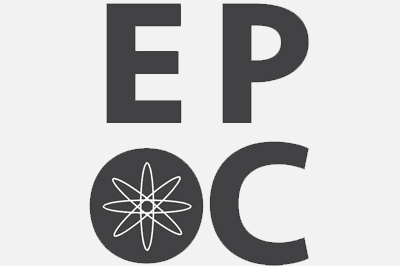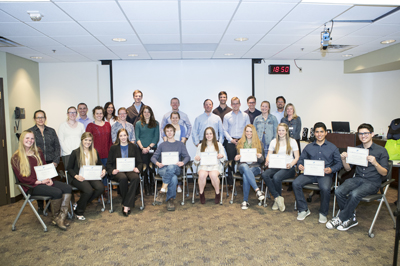SPRI Team Passionate About Inspiring the Next Generation of Scientists

The Steadman Clinic and Steadman Philippon Research Institute (SPRI) have been providing state-of- the-art medical care and cutting-edge research to thousands of patients since 1988.
SPRI is known for its ground-breaking innovation and dedication to research and education, providing solutions for patients who wish to remain active following orthopaedic injuries.
SPRI’s education programs have benefitted more than 225 Fellows and Visiting Scholars, but their reach extends beyond that to include unique science and education programs for local students.
Over the course of the 2017–18 academic year, hundreds of students will visit SPRI as part of the Education and Public Outreach Committee. EPOC, as it’s known, is just one of the many ways The Steadman Clinic and SPRI make a major impact in the community.
"By offering Eagle County students a chance to see and learn what world-class scientific researchers do, we hope to foster an interest in science," said Senenne Philippon, founder and chair of the EPOC program. "Students can experience some of the most advanced and high-tech biomedical engineering and surgical education labs in the world."
"The EPOC program was established to inspire the next generation of scientists through exposure to science, technology, engineering and math (STEM)", said Kelly Stoycheff, fellowship and education coordinator. "With our three-tiered program, EPOC is designed to reach students from fifth grade through high school."
About 400 fifth-graders from nine different schools participate in SPRI laboratory tours on three different occasions during the course of each year. "We open up our various laboratories to local fifth grade classes and allow the students to see the important aspects of the SPRI labs used by our scientists and doctors," said Stoycheff. "Students receive an interactive experience and Q&A sessions with SPRI scientists at each of their stations."
Dr. Travis Turnbull is the deputy director of biomedical engineering at SPRI. "Fifth grade is the perfect age to begin," Dr. Turnbull said. "They’re in their formative years and they’re still very curious. They’re also old enough, and mature enough, to walk through a cadaver lab, minus the human cadavers.
"In the surgical skills lab, they put on gloves and are given graspers – an instrument similar to tweezers – and work on plastic models. There are popcorn kernels they can pull out of knee, shoulder, and hip joints. It’s all about exposing them to as much as we can in a short amount of time."
Sixth- through eighth-graders interact with SPRI in a different way. SPRI scientists and researchers visit schools for classroom or assembly lectures to speak with students about the cutting-edge research taking place at SPRI.
"The presentations teach the students about the musculoskeletal system, orthopaedics, biomechanical research, and how the scientific method is applied to real-world scientific problems," said Stoycheff.
Additionally, researchers and scientists happily participate as judges at the local middle school science fairs.
When a student reaches high school, the program becomes more advanced for the students selected to be part of the EPOC Science Club.
The high schools have an intensive application process. It includes a letter of intent, a written essay, and a review of a scientific article. A total of 10 students, two per school, are selected by teachers from Vail Christian High School, Vail Mountain School, Vail Ski and Snowboard Academy, Battle Mountain High School and Eagle Valley High School.
 When selecting students, teachers must emphasize the time commitment of the program. The year-long program spans 20 weeks, includes 10 club meetings and requires a minimum of 15 hours of direct, personal education and training with professional scientists and engineers.
When selecting students, teachers must emphasize the time commitment of the program. The year-long program spans 20 weeks, includes 10 club meetings and requires a minimum of 15 hours of direct, personal education and training with professional scientists and engineers."During the Fall semester, under the mentorship of SPRI researchers, teams complete two small-scale research projects that teach the process of planning, conducting, writing, and presenting research," added Philippon. "The student selection process is very rigorous."
"The Science Club initially piqued my interest because of the hands-on work and personal testing involved," said Maddy Cooper, one of the students selected from Vail Mountain School. "I learn best by asking and applying questions to test theories, and the EPOC program allows me to work hands-on with professionals in my community to learn about how our bodies work and it provides a scientific foundation for any future endeavors."
"Science Club is truly a capstone program," said Dr. Turnbull. "Teachers from each Eagle County high school select students in grades 11-12 that would benefit most from the program. It’s an entire year of thinking, researching and communicating."
"Going through the process of researching, testing and explaining is an important way of thinking, and I believe this program will guide me throughout this process, yet challenge me to push my thinking beyond what would be expected in a classroom," said Cooper.
Jasmine Hartman Budnik, of Vail Christian High School. said, "I have been interested in the SPRI Science Club since I was a freshman. I have always wanted to understand how the body works.
"SPRI Science Club is such an amazing opportunity to be in a real medical research environment, do one-of- a-kind experiments, and be mentored by people who want to see kids like me become the next generation of medical and research professionals."
The fall semester starts the journey with two assigned projects, a hip fracture repair biomechanics project and an imaging-based project. For the imaging project, Science Club students look at a joint in the body. They must be able to identify that joint and then determine if it has any abnormal conditions. During the spring semester, the student teams take on the role of researchers and scientists.
"Each team of two students is matched to engineer and scientist mentors," said Dr. Turnbull. "We allow them to pick a project that sparks their interest."
At the end of the spring semester, when the projects are complete, Science Club students present their materials to professional researchers, scientists and clinicians. Project mentors say final presentations often look like a masters or doctorate-level thesis defense. It’s a challenging program, but the newly selected students say the experience will be worth the effort.
"This program provides the perfect opportunity to open doors beyond the typical classroom setting to truly immerse myself in a scientific environment," said Cooper. "I knew this setting would challenge me and provide an opportunity to learn about medical procedures unlike any other program."
"I was interested in the Science Club because I love biology and the sciences," said Claire Krueger from Battle Mountain High School. "I thought it would be so amazing to see the type of things they do and to learn from them."
"I've never had the opportunity to explore the world of medical science and see if it's something that I'd truly enjoy doing," said Lily Shapcott, a student from Vail Mountain School. "I thought that joining the Science Club would provide me with an opportunity to test the waters and see if it's something I'd like to pursue. So far it most certainly is; I look forward to the rest of the year and feel extremely fortunate to have been chosen to participate in this program."
Through all three tiers of the EPOC program, fifth grade, middle school and high school, more than 2,000 Eagle County students have interacted with SPRI scientists and researchers.
"This program demonstrates that The Steadman Clinic and SPRI are engaged in the community and do so much more than treat elite athletes," said Dr. Turnbull. "EPOC represents the importance SPRI places on education. We enjoy sharing high-tech and cutting-edge technology with the younger generation.
"We all get involved in it. It’s a pleasure to be able to work with people that share the same passion. We really have our hearts behind this program."

